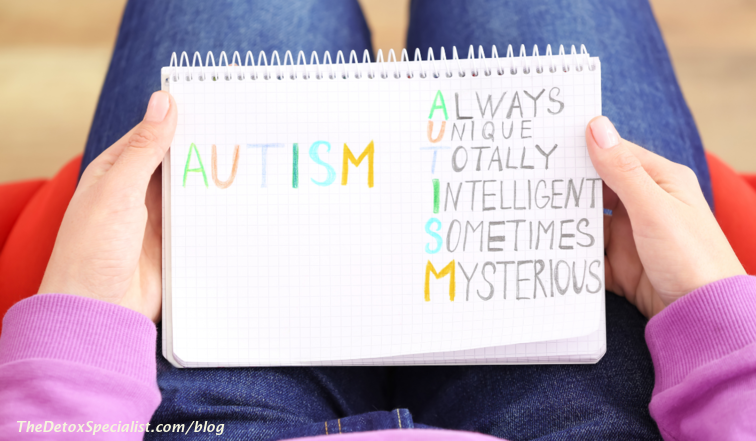 Today, we embark on a journey into the realm of autism, seeking clarity on a topic that has stirred both curiosity and controversy in recent years: Autism Detox. We aim to unravel the complexities of this subject, exploring its relevance to individuals on the autism spectrum. While providing valuable insights for professionals, students, and the general public.
Today, we embark on a journey into the realm of autism, seeking clarity on a topic that has stirred both curiosity and controversy in recent years: Autism Detox. We aim to unravel the complexities of this subject, exploring its relevance to individuals on the autism spectrum. While providing valuable insights for professionals, students, and the general public.
What is Autism Detox?
Autism Detox, also known as “biomedical intervention” or “chelation therapy,” encompasses a range of alternative treatments and therapies believed to alleviate autism symptoms. These approaches often revolve around the removal of toxins from the body. With the underlying hypothesis that toxins might contribute to the development of autism. Key components include dietary changes, and vitamin and mineral supplementation. Also the controversial use of chelation therapy to eliminate heavy metals from the body.
Controversies Surrounding Autism Detox
Now, let’s delve into the heart of the matter – the controversies surrounding autism detox:
Lack of Scientific Evidence: There is a significant issue with autism detox that sticks out. the absence of strong scientific evidence. Most of these techniques haven’t gone through extensive testing or peer reviews. It will be challenging to evaluate their efficacy and safety.
Safety Risks: Chelation therapy, in particular, raises concerns due to potential risks and side effects, including kidney damage and mineral imbalances. The associated dangers may outweigh any potential benefits.
Ethical Concerns: Autism detox treatments can place a heavy financial burden on vulnerable families, often with promises that may not lead to meaningful improvements in the lives of individuals with autism. This raises ethical concerns.
Dietary Restrictions: Some autism detox diets require strict dietary limitations, which can be tough to follow and may lead to nutritional gaps.
Relevance to Individuals with Autism
Understanding the perspectives of individuals with autism is paramount when discussing autism detox. It’s crucial to remember that autism is a spectrum, and each person’s experience varies. Here are some vital considerations:
Individual diversity: Because autism manifests differently in each person, it is crucial to provide each patient with specialized, personalized therapy and support.
Communication barriers: Some people with autism have trouble expressing themselves, which highlights the necessity to put their welfare and best interests first in any interventions.
Evidence-based decisions: For individuals with autism, therapies like Applied Behavior Analysis (ABA) and speech therapy have been proven effective in improving skills and communication. These evidence-based approaches ensure tailored and beneficial support for individuals with autism.
Heavy Metal Detox for Autism
 Heavy metal toxicity has been proposed as a potential contributor to autism. The concept behind heavy metal detoxification is to eliminate toxic substances like mercury, lead, and aluminum, which might accumulate due to environmental exposures. Here are some detoxification methods for heavy metals:
Heavy metal toxicity has been proposed as a potential contributor to autism. The concept behind heavy metal detoxification is to eliminate toxic substances like mercury, lead, and aluminum, which might accumulate due to environmental exposures. Here are some detoxification methods for heavy metals:
Chelation therapy: This treatment uses chelating agents to remove heavy metals from the body. But given its contentiousness and potential hazards. A medical expert must supervise it.
Dietary Modifications: Some caretakers choose to make dietary modifications, such as avoiding specific foods that could contain heavy metals. This entails selecting organic foods and avoiding certain fish. Selecting goods with low levels of heavy metals.
Supplements: There are supplements like glutathione and chlorella believed to aid natural detoxification. To validate their efficacy and safety in heavy metal detox for autism, more research is necessary.
Autism Detox Baths
Besides heavy metal detoxification, another emerging aspect is the use of specialized baths, known as “Autism Detox Baths,” to promote relaxation and potentially alleviate autism-related symptoms. These baths often incorporate elements such as Epsom salt, essential oils, and specialized bath products. While scientific evidence is limited, some individuals and caregivers have reported positive experiences.
Epsom Salt: These baths, which frequently include Epsom salt, are well-known for their ability to relax muscles, lessen stress, and improve sleep. Though scientific evidence is still preliminary, some claim they may even help with detoxification.
Essential Oils: Lavender and chamomile essential oils are frequently used in these baths to create a calming ambiance. These oils are believed to have benefits for sensory modulation and relaxation.
Warm Embrace: Simply taking a warm bath can help calm autistic people down by easing their anxiety and sensory sensitivity.
Conclusion
Let’s proceed carefully and with caution while discussing autism detox. Even though some families have success stories to share, there are significant questions that need to be answered because of the paucity of reliable scientific information, potential hazards, and moral dilemmas.
Our focus should be on tailored approaches, evidence-based therapy, and raising the quality of life for those who are on the autistic spectrum if we are to serve people with autism. Instead of looking for fast fixes, let’s make investments in therapies supported by solid research to better fulfill the varied requirements of people with autism and improve their general well-being.



